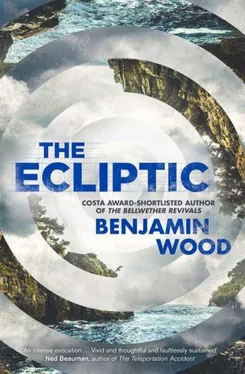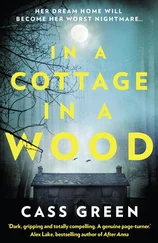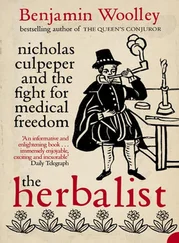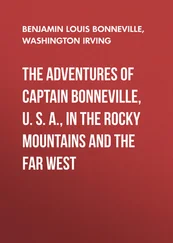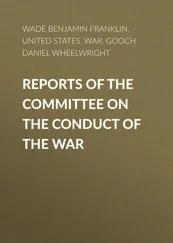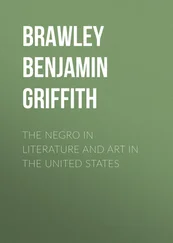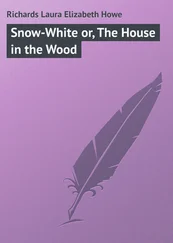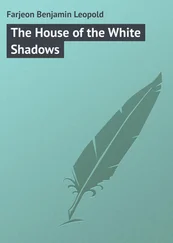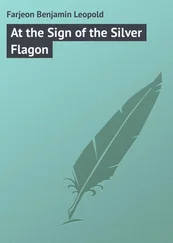What I did not expect was the commotion that followed. The reviewers were even more fulsome in their praise of my paintings than Muirhead—‘staggering’, they said; ‘exceptional’, ‘dazzling’, ‘ambitious, affecting’—and the public seemed to mistake the ignorance of these critiques for testimonials. The Roxborough attracted so many visitors in the show’s run that it had to extend its opening hours to accommodate them. Had I ventured there on any of those quiet afternoons in January, I would have found myself queuing at the door. I learned all of this from Dulcie, when she came by the studio at the close of the show with Max Eversholt and a bottle of champagne already opened. ‘Well, somebody’s got to celebrate your success,’ she said, ‘even if you won’t.’
I was obliged to get three glasses from the kitchen cabinet and sit with them, toasting my so-called achievements in the bedlam of my flat. Max toed a bundle of rags from my sofa and sat down. He had lost more hair since I had seen him last, but he was no less prone to fussing with it. ‘Doesn’t matter who the artist is — after a while, all these places look the same to me,’ he said, regarding my studio. ‘Shouldn’t you be looking for a bigger space now?’
‘I’m fine where I am,’ I told him, pretending to drink.
‘She’s fine where she is,’ Dulcie said. ‘Stop trying to spend her money.’ She dragged a stool all the way from the other side of the room and dusted it off with her coat-sleeve.
We clinked our dirty glasses and I just sat there, letting them assume the yoke of conversation, as always. They went on for some time about the show, how quickly all the pieces had been sold, talking figures and ‘next steps’, and soon they got round to more interesting matters. ‘That little project for the observatory could be worth doing in the interim,’ Max said, tossing his hair back. ‘Before we start planning too much overseas, I mean.’ I was not quite sure how much of my earnings Max Eversholt still had a stake in, but he never stopped speaking as though his involvement in my affairs was paramount.
Dulcie explained that three of the paintings in my show had been bought by an architect named Paul Christopher. They had talked for a while at the private viewing: ‘He’s good pals with Ken, actually. That’s how we got on to the subject. . Ken asked him where he was planning on hanging all the paintings, and he said, “They’re going in my office, if I can find the space.” So I said, “It’s a shame you don’t have a bigger practice — you could’ve bought another three,” and he said, “Well, that doesn’t stop me commissioning more.”’ According to Dulcie, the architect had been hired to build a new planetary observatory in the Lake District. ‘I think it’s linked to one of the universities up there — Durham, I think he said — but it’s all privately funded. You know how these things go: some rich idiot messed around with a telescope when he was a lad and now he gets his name on an observatory. Whatever the reasons, it’s more or less built already, and our friend Christopher wants you to do a mural for the science centre.’
‘Only problem is,’ Max added, ‘who the bloody hell’s going to see it, all the way up there?’
‘I don’t know. Scientists and students, I’d expect. I’m sure they wouldn’t have built it otherwise.’ Dulcie went on talking in the manner she knew I hated: studying her fingernails when she ought to have been addressing me. ‘Christopher says he wants to make a real feature of the entrance, and he was knocked out by your show. I asked him what kind of budget he had in mind and he told me there was plenty in the pot. It might be worth considering.’
It seemed to me that anyone whose taste in art was so undiscerning as to appreciate my New York paintings could not be a very good architect. So I dismissed the suggestion of meeting him offhand. ‘All right,’ Dulcie said. ‘Just thought I should mention it.’ But as the days went by, the idea of working on a mural grew more appealing. I thought a lot about the intensity of my student work on the top floor of the Glasgow School, the fearlessness of those images I once made for Henry Holden, and I wanted to see if I could restore some of that spirit. When I called Dulcie to tell her of my change of heart, she did not seem surprised.
The drawings for the mural at the Willard Observatory were submitted in April 1961 and approved that same month. I met just once with the architects at their offices in Montague Street. They showed me their original concepts for the science centre and how their blueprints had evolved, and, referring mostly to photographs and scale models, they talked me through their various stipulations for the interior—‘the brief’, as they insisted on calling it. The dimensions of the entrance hall were not as vast as I had hoped, but, discussing the project further with Paul Christopher, I sensed that we had similar perceptions of what a mural in that space should do. He was a waifish, softly-spoken man who had a very clumsy and unthinking manner: clattering his hips on table corners as he escorted me through the office, picking a clod of earwax from the dip of his right lobe during our meeting. Despite the fact that he had bought three of my weakest paintings from Dulcie, he had a good sensibility for art, and we seemed to share opinions on most aesthetic matters: he had his misgivings about the ideals of Le Corbusier, preferred the sculptures of Brancusi to Modigliani, and had also liked the purely abstract works in the recent RBA show. Everything about the project felt right to me. I had just one condition for accepting the job and Paul Christopher agreed to it: I would paint the mural on a set of canvases in my own studio and install it in pieces when the deadline came. ‘Yes, however you see it working best,’ was what he said. ‘I didn’t expect you’d want to do a fresco, and I’m not thrilled with the plastering job anyway — you’d be doing us a favour.’ He had thought of me for the mural because of what he called ‘the starriness’ of my recent work, and I did not care to press him for a fuller explanation.
My initial ideas lacked verve. I knew very little about astronomy and did not want to paint something that failed to reference its surroundings, or that referenced them too bluntly. So I took to visiting the Planetarium for their evening shows to develop my understanding of the cosmos, and took membership of the Royal Astronomical Society, pulling texts from their library in the afternoons. During that spell of research at Burlington House, I was exposed to so much inspiring work: rare celestial charts by Andreas Cellarius from the seventeenth century, ornate star maps from Bayer’s Uranometria , and Galileo’s remarkable moon drawings. I found myself compelled by the mythologies that supported these early visions of the stars, making detailed studies of Pegasus, Ophiuchus, Hercules, Orion and other featured characters, thinking I might incorporate them into the mural somehow. In John Flamsteed’s Atlas Coelestis , and all the great celestial atlases of the Georgian era, I found the same constellations appearing as mythical creatures, symbolic animals (the serpent, the eagle, the owl), and objects of war (the shield, the spear, the bow and arrow). It seemed strange to me that such precise works of science could be cloaked in so much allegory.
I kept returning to one particular atlas. The archivist said it was compiled by a schoolteacher called Alexander Jamieson in 1822. ‘Another great Scot,’ I said, but he did not answer me. These celestial charts of Jamieson’s were just as meticulous as the others, but the renditions of the animal forms — Cygnus, Leo, and Aries, especially — were better expressed and proportioned. I was taken with the thought of reimagining a section of his atlas in my mural. For a few days, I developed sketches from Jamieson’s originals, depicting Centaurus — half man, half horse — skewering the constellation of Lupus, the wolf, with a spear. Each figure was badged with tiny stars, showing the framework of the constellations. But something about this concept failed to convince me. It addressed the subject too directly. The image was too oppressive for the space. I abandoned it.
Читать дальше
